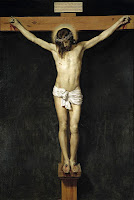Where does the name 'Easter' come from?
The English word "Easter" which comes from the word "Eostre". The Anglo-Saxon word for April was "Eostre-monath" (the month of openings). However, it should be remembered that Christians celebrated the resurrection of Christ long before the word "Easter" was used, and the word they used for the celebration was "Pascha", which is derived from and linked to the Jewish festival of Passover.
According to Bede, the English monastic historian, the English word Easter comes from the Anglo-Saxon name for the month of April, which was known as "Eostremonath" in the AngloSaxon tongue and since Pascha was most often celebrated in Eostremonath, the English Christians began calling it "Easter". Bede also notes that the month was named after the Anglo-Saxon goddess Esostre.
Easter is the most important festival in the Christian calendar. It celebrates the resurrection from the dead of Jesus, three days after he was executed. The Easter story is at the heart of Christianity.
 |
Leonardo da Vinci's late 1490s mural painting in |
Maundy Thursday:
This is the Thursday before Easter Day
Last Supper: On Maundy Thursday Christians remember when Jesus ate the Passover meal with his disciples, breaking bread and drinking wine, which is now known as the Last Supper.
Many Christians remember this by sharing bread and wine together in a service called Holy Communion, Eucharist or Mass.
At this meal Jesus told his followers that they should love and serve one another. He demonstrated this by washing the feet of the disciples - something a servant would normally do. You can read this story in the Bible in John Ch.13v1-15
The word maundy comes from the command (mandate) given by Jesus at the Last Supper, that we should love one another.
Roman Catholic church services include a ceremony in which the priest washes the feet of 12 people to commemorate Jesus' washing the feet of his disciples.
Good Friday:
 |
| Crucifixion and death of Jesus Christ by_Diego- Velázquez |
Good Friday is the Friday before Easter Sunday. It commemorates the execution of Jesus by crucifixion.
Good Friday is a day of mourning in church. During special Good Friday services Christians remember Jesus' suffering and death on the cross, and what this means for their faith.
In some countries, there are special Good Friday processions, or re-enactments of the Crucifixion.
The main service on Good Friday takes place between midday and 3pm. In many churches it takes the form of a meditation based on the seven last words of Jesus on the cross, with hymns, prayers, and short sermons.
Easter Sunday:
 |
| Resurrected Jesus and Mary Magdalene, by Antonio da Correggio, 1543 |
Easter Sunday marks Jesus' resurrection.
After Jesus was crucified on the Friday (now known as Good Friday), his body was taken down from the cross, and buried in a cave tomb. The tomb was guarded by Roman Soldiers and an enormous stone was put over the entrance, so that no-one could steal the body.
On the Sunday, Mary Magdalene, followed later by some of Jesus' disciples visited the tomb and found that the stone had been moved, and that Jesus' body had gone.
Jesus himself was seen that day by Mary and the disciples, and for forty days afterwards by many people. His followers realised that God had raised Jesus from the dead. Christians call this the Resurrection.
The week leading up to Easter is called Holy Week.
No comments:
Post a Comment